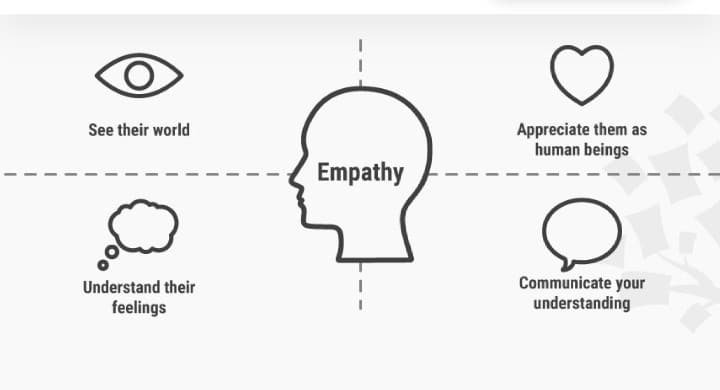Customer management systems (CMS) is a software program that facilitates digital information production, storage, and distribution. In modern times, a CMS is most often used to build and maintain websites. In this article, we’ll examine all there is to know about Customer management systems in great detail. Not only will we go over the fundamentals of CMS, but we will also discuss how a Customer management system differs from other website construction possibilities.
You will also find out why you need to utilize a CMS for your upcoming website project, and we will walk you through the various available choices so you can select the most appropriate one. So, Let’s dive in!
What Is A Customer Management System CMS?
The term “Customer management system” refers to the systems used to organize digital Customers for administration, organization, and control.
To be more specific, Customer management systems have useful applications for websites, particularly for websites requiring a user interface for adding, modifying, and managing a website’s customers.
Types Of Customer Management Systems
Did you know that Customer management systems are utilized in a variety of contexts besides the development of websites?
There are five distinct kinds of Customer management systems, which are as follows:
- Component Customer Management System
- Document Management System
- Enterprise Customer Management System
- Digital Asset Management System
- Web Customer Management System
Why Is a Customer Management System Needed?
A Customer management system CMS is the easiest way to develop and manage a website, even though other methods can be used to build and maintain a website outside the scope of a Customer management system.
To put it simply, a Customer management system enables users to generate, alter, store, and make public their original digital Customer, just as the system’s name would suggest.
Although at first glance, a Customer management system could appear to be a highly complex piece of software, the simplicity with which it can be utilized to construct and maintain a website is a significant advantage of utilizing such software.
When utilizing a Customer management system CMS, you will rarely, if ever, be required to have prior knowledge of coding or experience in constructing websites.
The beauty of a Customer management system is that it enables users to administer their websites without requiring any knowledge of code, access to the server, or changing of the website’s files.
Customer management systems transform maintaining a website into something akin to using a word processor to make edits to a paper.
How Does A Customer Management System Work
Consider the process of developing a website to be similar to that of developing a house. Your Customer management system can be compared to “construction necessities” for your house, such as the following items:
- The roof
- Walls
- Plumbing
- Doors
The Customer management system (CMS) is your vital building component that ensures a solid foundation is in place for the remainder of the project.
A Customer management system allows you to start making your project habitable by furnishing it and designing the interior according to your preferences.
This is what you are doing when you populate your new website project with Customers, change how it looks, or give it the best UX (user experience) possible.
You are doing this when you start populating your new website project with Customers.
For instance, it is frequently stated that WordPress is a “core functionality” for the construction of a website, with WordPress core functioning as the foundation.
Users of any Customer management system will be able to extend the system’s functionality by adding new code or installing plugins, as this is a feature shared by all CMSs.
Some are simpler or more naturally suited to the task than others.
Features of a Customer Relationship Management System CMS
A Customer management system’s (CMS’s) most essential functions include, but are not limited to, the following:
#1. Overall Flexibility
The Customer management system will supply the fundamentals required to construct a website.
The site developer, who would be you, can then expand upon those foundations by integrating one-of-a-kind features, resulting in a distinctive and interactive website.
#2. Permission Controls
The primary objective of the permission controls included within a CMS is to ensure users’ safety.
Using the controls, you can delegate particular user roles to each group member.
Everyone will have access to the features and customers necessary to perform the role they have been allocated, but only to the extent necessary for that task.
#3. Multi-Language Support
Internet Customer is available in virtually every language spoken on this planet. Your website doesn’t need to be confined to a single written language.
Your website can be brought to life in various languages thanks to the translation capabilities of most leading Customer management platforms.
#4. Scalability
Most websites operate with the expectation that their audiences will increase as time passes.
This growth will involve increasing the number of customers a website contains and the number of users the website currently has.
As a result, Customer management systems are developed with scalability that can adapt to meet the requirements of your website as it develops over time.
3 Reasons To Use A Customer Management System CMS
The web is made easier to use by using a CMS.
It simplifies building a website, maintaining it, and getting more out of it, which lowers the barriers to entry and makes it easier for people to participate.
A Customer management system should handle the management of your organization’s website, and here are five reasons why you and your business should do so:
#1. It is Cheap
If you utilize a Customer management system for your website, you can get away with using either free or inexpensive software.
Have you not been informed? Cheap is the new chic.
#2. Ease of use
If you have experience with computers, most CMS software is simple to operate.
You can utilize a Customer management system (CMS) if you can send an email, use Microsoft Word, or create a Facebook account.
And regular use does not, in the vast majority of instances, pose a threat to the integrity of the design.
Website creation is geared toward those with less technical expertise.
#3. Do it yourself
When you use a Customer management system, you are stepping into the do-it-yourself movement.
You no longer need to wait for a coder or pay them to correct a little problem, saving you both time and money.
What Are The Examples Of Customer Management Systems?
When you first start looking at Customer management systems, you’ll quickly discover that quite a few alternatives are available on the market.
In this article, we won’t go over all the potential solutions, but we will discuss the four that have received the greatest customer attention.
#1. WordPress
As we enter 2023, WordPress has proven to be the most widely used Customer management system.
The race is so one-sided that it’s not even close.
By some estimates, WordPress is responsible for running 42.9% or more of all websites. And that’s more than 64 percent of all web pages!
Most people misunderstand WordPress as a simple blogging platform rather than a powerful Customer management system capable of supporting complex, multi-million dollar e-commerce operations.
The WordPress platform may have gained notoriety as an easy-to-use blog editor, but it has now evolved into a robust CMS.
Millions of websites are powered by WordPress, making it the most popular Customer management system.
When and why did WordPress become the go-to platform for building websites? WordPress’s continued status as a community-driven, open-source project is a major factor.
#2. Joomla!
Moving on to several other choices for Customer management systems that are comparable but less well-known, we come to Joomla!
This Customer management system (CMS) gets its name from a Swahili term that translates to “altogether,” which is a nod to the community of open-source developers that work on the platform.
When compared to WordPress, you’ll find that Joomla! is a little more focused on skilled developers while still riding on an interface that’s user-friendly.
This is something that you’ll notice when comparing Joomla! to WordPress.
The software has fostered a sizable user community that contributes to expanding Joomla functional capabilities by designing and developing new templates and add-ons.
Website developers unable to achieve the desired amount of control within the WordPress environment may consider WordPress’s alternative Customer management system, Joomla!
#3. Drupal
Compared to the WordPress solution, Joomla, the system was more complicated.
Drupal represents a significant increase in complexity.
Drupal was first made available to the public in 2001 and is, by a significant margin, the most technically demanding and sophisticated Customer management system on our list.
It’s the perfect answer for talented developers who want full control over the sites they construct but don’t need much technical direction.
Drupal is the Customer management system (CMS) that works best for ambitious and highly complicated websites, as you’ve probably figured out.
It has a wide range of applications and enables developers to build almost any kind of website they can imagine, with almost no restrictions.
Some software developers believe it is the most capable Customer management system currently on the market.
Using Drupal almost ensures that your site will load quickly and have a high level of security straight out of the box.
#4. Magento
This is the last solution on our list and is considered to be something of an oddity in the field.
Magento is a Customer management system (CMS) that is fully functional, although its primary focus is on online shopping.
With the addition of the WooCommerce plugin, users of WordPress may access robust e-commerce capabilities. You only receive e-commerce functionality via Magento.
To this day, it is still one of the most widely used Customer management systems (CMS) for developing online stores.
Magento is not the platform for you if you do not intend to create an online store.
However, if this is the case, you should consider comparing side-by-side with WooCommerce for WordPress.
Even if it doesn’t convince you of anything else, it can sway your opinion that WordPress will provide you with more total customization options than Magento.
This Customer management system is also available as a free and open-source download.
Nevertheless, it provides a variety of chargeable upgrades, one of which is called Magento Commerce.
What is CRM or CMS?
Customer relationship management systems and content management systems (CMS) are examples of software used by organizations operating online.
Customer relationship management (CRM) software logs and reports on every lead and customer’s interactions with your website.
What is a CRM System Example?
A very perfect example of a CRM system example is Automating Consistent Response.
What are the 3 Key Types of CRM Systems?
Customer relationship management (CRM) systems have three primary categories: collaborative, analytical, and operational.
Why Do Companies Use CRM Systems?
CRM systems were developed to simplify managing a company’s relationships with its customers, aiming to enhance customer service.
These technologies allow companies to monitor client data throughout the customer’s lifetime.
What is the Difference Between CMS and ERP?
A content management system user is responsible for managing the content and structure of a website. In contrast, a user of an ERP platform is responsible for managing inventories, invoices, and product prices.
Conclusion
Since you now have a deeper comprehension of Customer management systems, the question becomes: What is the most suitable for the project you are working on?
Also, installing the WordPress Customer management system on the host you’ve decided to use is a great way to get started working on your project immediately.
The final version of your brand-new website may be ready to go in only a few days!
Related Articles
- Best Content Management Software System For Your Website In 2023
- COMPLIANCE MANAGEMENT SYSTEM: Definition and Importance
- Best eCommerce Platform: Top 15 eCommerce platform UK
- E-COMMERCE PLATFORMS: Best Rated UK Ecommerce Platforms in 2023, Updated (Free & Paid)
- IDENTITY MANAGEMENT SYSTEM






